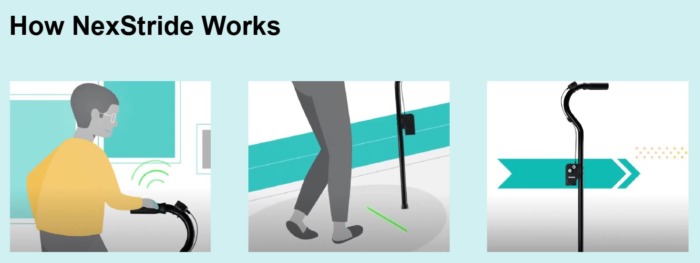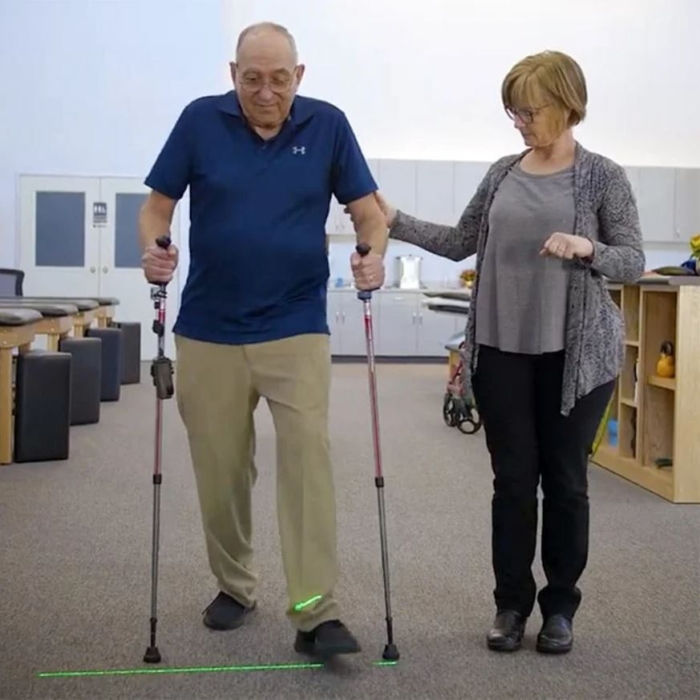
Navigating the world around us can be challenging for individuals with disabilities, but innovations in mobility technology are making a significant impact on how those with mobility challenges move forward.
NexStride, created by a veteran with Parkinson’s Disease and a biomedical engineer, is a walking assist device that combines the functionality of a traditional walker with cutting-edge technology.
NexStride is designed to help a body recalibrate, especially when walking becomes difficult due to conditions like Parkinson’s, cerebral palsy, multiple sclerosis, stroke recovery or other mobility issues. Its intelligent design not only provides support but also encourages a more natural walking gait.
How NexStride Works
NexStride’s compact device is easily attachable to a user’s cane, walker or trekking poles, and its technology utilizes adjustable light and sound signals to help users reconnect their brain and body and restore confidence in movement.
The device employs two revolutionary features to assist users. One is the audible metronome, an engaging audio signal that activates different pathways in one’s brain, guiding them to move forward with greater ease and consistency.
The other tool is a visual laser, which projects a target in front of the user’s feet, helping them focus and correct their stride. The goal is to start walking with larger steps either stepping over or towards the laser light.

Both cues can be used continuously or on-demand, by pressing the controller during an episode of freezing.
These visual and audio cues allow the brain to switch from automatic commands to intention-based or goal-oriented commands. The instant these messages reach their target, the body’s nervous system responds with the expected movement.
The process behind these types of cues has long been studied. Cueing the brain in this way lets the brain form intentions, and these intention commands use alternate, functioning neural pathways to send movement messages down to one’s body. It’s a science!
NexStride has also been used in physical therapy sessions to help speed-up recovery by training the brain and body to work together and walk with improved technique.
Those with disabilities shouldn’t have to forgo activities like walking with their loved ones, navigating their own home or hiking through terrain because of a fear of falling or freezing.
NexStride is allowing individuals to take back their independence and experience a renewed freedom of movement and mobility.
For more information or to purchase, visit https://www.getnexstride.com/.
